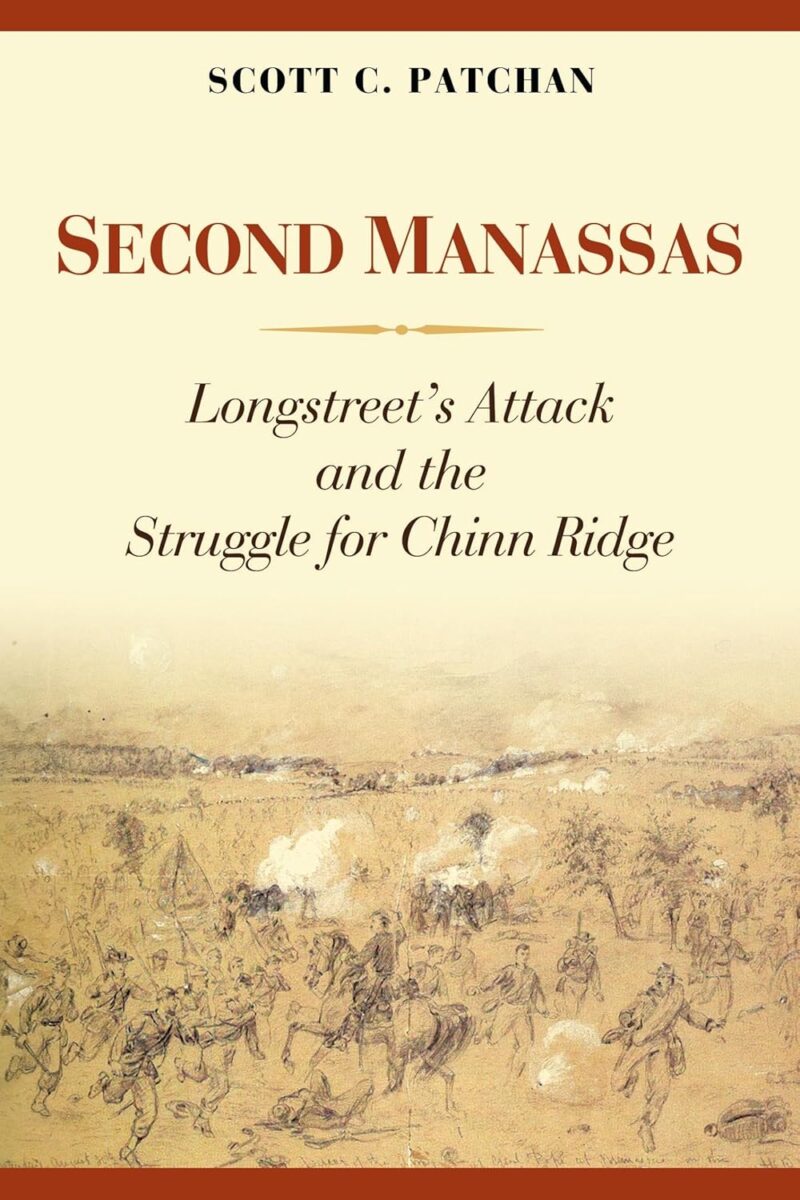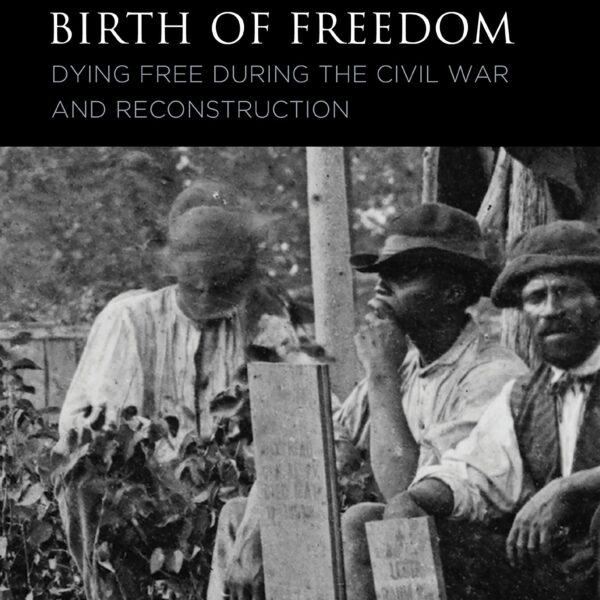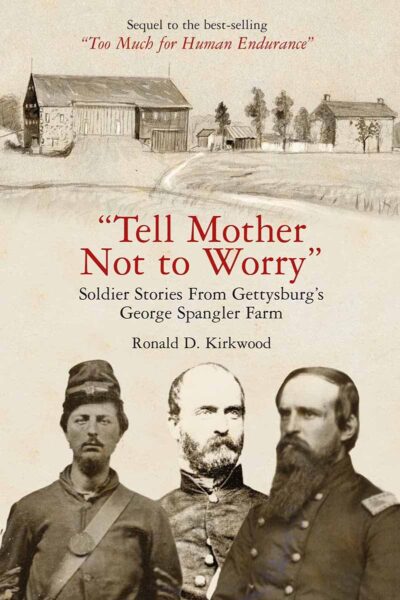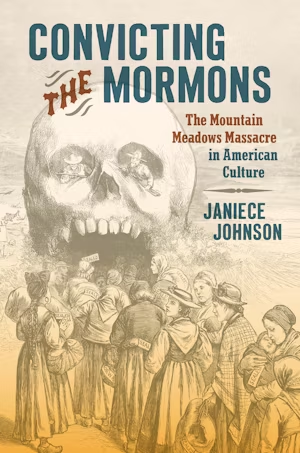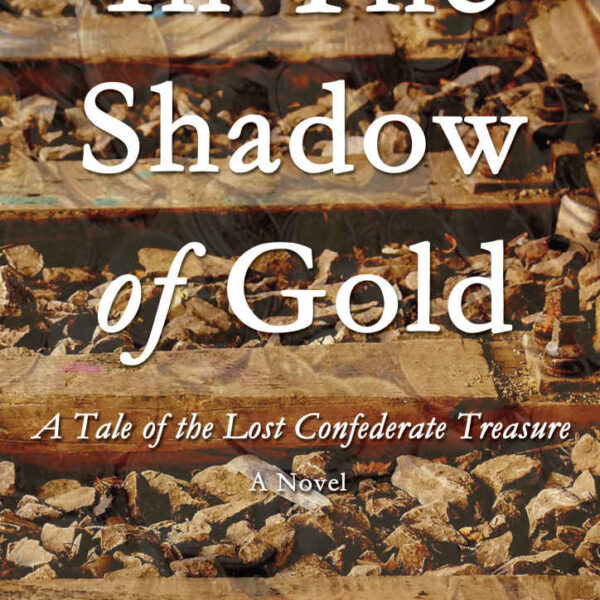The fighting around Manassas Junction in northern Virginia during the late summer of 1862 is often hailed by students of the Civil War as one of Confederate General Robert E. Lee’s greatest battlefield triumphs. On August 29-30, Lee’s Army of Northern Virginia routed Union General John Pope’s Army of Virginia. Lee’s men had inflicted 16,000 Union casualties, nearly twice as many as they had suffered. In addition to dealing out a great deal of punishment, the Confederates had cleared the last major Union field army from northern Virginia. The way now stood open for an invasion of the North that began only days later.
Yet the triumph might have been greater, a possibility explored by Scott Patchan. A Civil War battlefield guide and author of two previous Civil War studies, Patchan argues that the failure of Confederate attackers to seize Chinn Ridge in a more timely manner than they actually did on August 30 prevented Lee from perhaps scoring a war-winning victory. High ground running along the Union left flank, Chinn Ridge saw vicious fighting as Confederate General James Longstreet, one of Lee’s two corps commanders, attempted to crush the Union army still reeling from its own unsuccessful assaults launched the previous day and that morning. The stout defense of Chinn Ridge by a hodge-podge assortment of Union brigades and regiments, coupled with several Confederate command tangles, allowed the rest of Pope’s army to regroup and begin to retreat back toward Washington. Had that respite not occurred, the Confederates might have outflanked the Union army and cut off its retreat routes. “Never before or after,” Patchan declares, “would Lee have such a realistic opportunity to achieve the Napoleonic goal of defeating an opponent so badly that his army ceased being an effective fighting force” (117).
That Union soldiers deserved better from Pope is a point well made by Patchan. So preoccupied by launching frontal attacks against the Confederate defensive lines in the hope that one more might crumble them, Pope refused to heed the ample warning that Longstreet’s men were massing on his left. Lieutenant Colonel Joseph McLean of the 88th Pennsylvania was one of the many Federal soldiers left to pay the price. Suffering a mortal wound soon after his regiment was rushed into the fighting, McLean asked his men to “‘Tell my wife she will never blush to be my widow. I die for my Country and the old flag’” (63).
The battlefield competence of Confederate division, brigade, and regimental officers is another point highlighted by Patchan. Not all of them fought well. Patchan takes Brigadier General James Kemper, who went on to achieve distinction as a brigade commander, especially at Gettysburg, to task. Serving as a division commander at Second Manassas, Kemper failed to coordinate the maneuvers of his men. He fought his division as individual brigades and, in doing so, “showed very little tactical ability.” More Confederate officers fought superbly. Patchan especially singles out Colonel Jerome Robertson of the 5th Texas. The Texans spearheaded the initial Confederate assaults on Chinn Ridge, and remained heavily engaged for much of the rest of the day. The “aggressive actions” of Robertson and his men “rank among the most impressive displays of fighting ability during the course of the Civil War” (123).
The book ends with a wonderful appendix listing a “Tour Guide for Longstreet’s Attack.” Patchan encourages visitors to walk the Confederate “assault path, a distance of about 1.7 miles as the crow flies and not counting a return hike. Simply driving from one stop to another does not give you the opportunity to visit all scenes of crucial action” (144). Readers also are reminded that the battlefield in 1862 looked different than it does today. The terrain was more open and “soldiers had the advantage of being able to see what was happening at more distant points that are now blocked from our view by forests” (144).
Readers should not expect to find in Patchan’s book a detailed account of the Second Manassas Campaign, nor, for that matter, the battle itself. The author makes this clear through his subtitle. Readers do receive, however, a concise description of the critical fighting along and around Chinn Ridge. Patchan draws upon a range of soldiers’ letters and diaries to bring an immediacy to the fighting. For those interested in learning more about one of the greatest Confederate battlefield successes of the war, a triumph that might even have ended the war had the Union defenders not fought as stubbornly as they did, this is a good book.
Lawrence Kreiser Jr. is an Associate Professor of History at Stillman College and most recently the author of Defeating Lee (2011).
